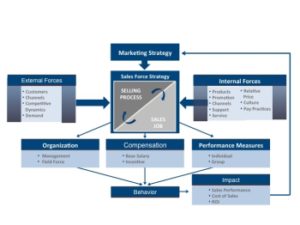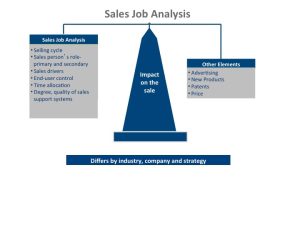The focus on sales compensation is understandable as selling is, by far, the most expensive part of strategy implementation for most companies. Five times the expenditures on all media advertising; 20 times larger than the money spent on all online marketing and advertising in 2013.
Here are five areas to test your plan. Focusing on these areas can help you determine whether you have problems.
#1. READY…FIRE…AIM APPROACH 
In todays hurry-up world, quality often is not given enough emphasis over a quick answer. A holistic approach is needed to ensure that proper time and thought are given to plan design and any potential unintended consequences. As one CEO remarked that the company took its time to ensure “…we didn’t have sales compensation becoming disconnected from the overall financial result of the business”. The CEO wanted to ensure that the company was paying for the right strategic results.
The basic premise is that a sales compensation plan does not exist in a vacuum…as illustrated in the graphic above.
#2. “ALL THE SAME” PERCENTAGE

Setting the same percentage of base salary as the incentive for target performance for all sales positions is often evidenced in plans. Careful sales job analysis should be undertaken to properly reflect each position’s impact and influence on a sale. This analysis then becomes an important part of determining the right pay mix per sales position.
#3. TOO MANY MAX OUT
In this case, the design allows too many sales reps to max out on incentive earnings. This result can cause the CFO to worry about the inherent risk in the plan’s design or to “pushing” fourth quarter sales into the first quarter of next year. While 60 percent of the sales force should achieve quota or above, a recent survey stated that only 4 percent, on average, maxed out. If your result is significantly higher, then multiple analyses should be conducted to determine the reasons (e.g., Quota and territory design analyses).
#4. TOO MANY MEASURES OR OBJECTIVES
While communicating management’s goals to the field, too many measures or objectives result in the measures receiving little or no attention. Four should be the maximum number of incentive measures. This statement is backed up by a recent Hay Group survey of 700 companies that reported 85 percent of respondents had 4 or fewer incentive measures. Also, any single incentive measure or objective accounting for less than 15 percent of the targeted incentive opportunity is simply wasted.
#5. UNDUE OR EXCESSIVE RISK
To quickly increase sales, a company may decide to provide a higher leverage of incentive to total cash or an uncapped incentive opportunity vs. the past design. This action may produce significant risks in terms of cost control, uneven production scheduling, or even upset key customers due to delivery issues.
Contact Us
To learn more or discuss your sales compensation concerns, please contact Tim Weizer at timsalescne.com (phone 312.479.6411) or Neil Lappley at nlappley@lappley.com

 Setting the same percentage of base salary as the incentive for target performance for all sales positions is often evidenced in plans. Careful sales job analysis should be undertaken to properly reflect each position’s impact and influence on a sale. This analysis then becomes an important part of determining the right pay mix per sales position.
Setting the same percentage of base salary as the incentive for target performance for all sales positions is often evidenced in plans. Careful sales job analysis should be undertaken to properly reflect each position’s impact and influence on a sale. This analysis then becomes an important part of determining the right pay mix per sales position.
Leave a Reply
Want to join the discussion?Feel free to contribute!